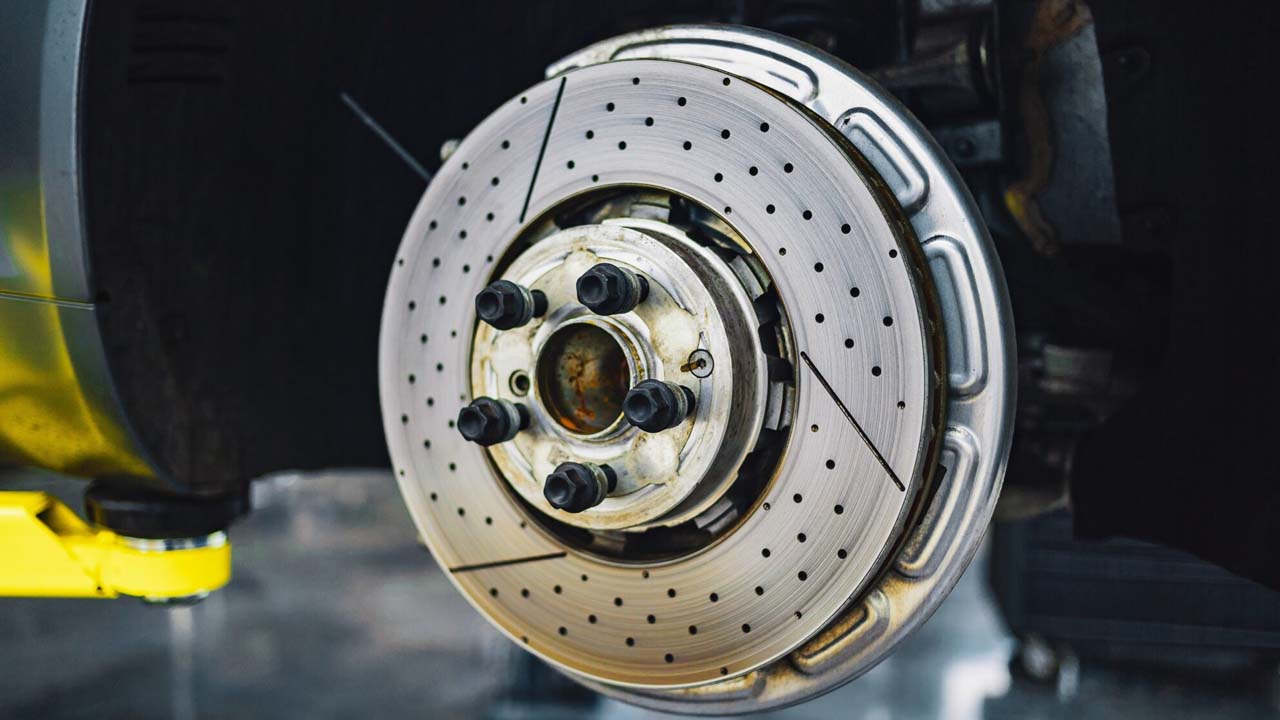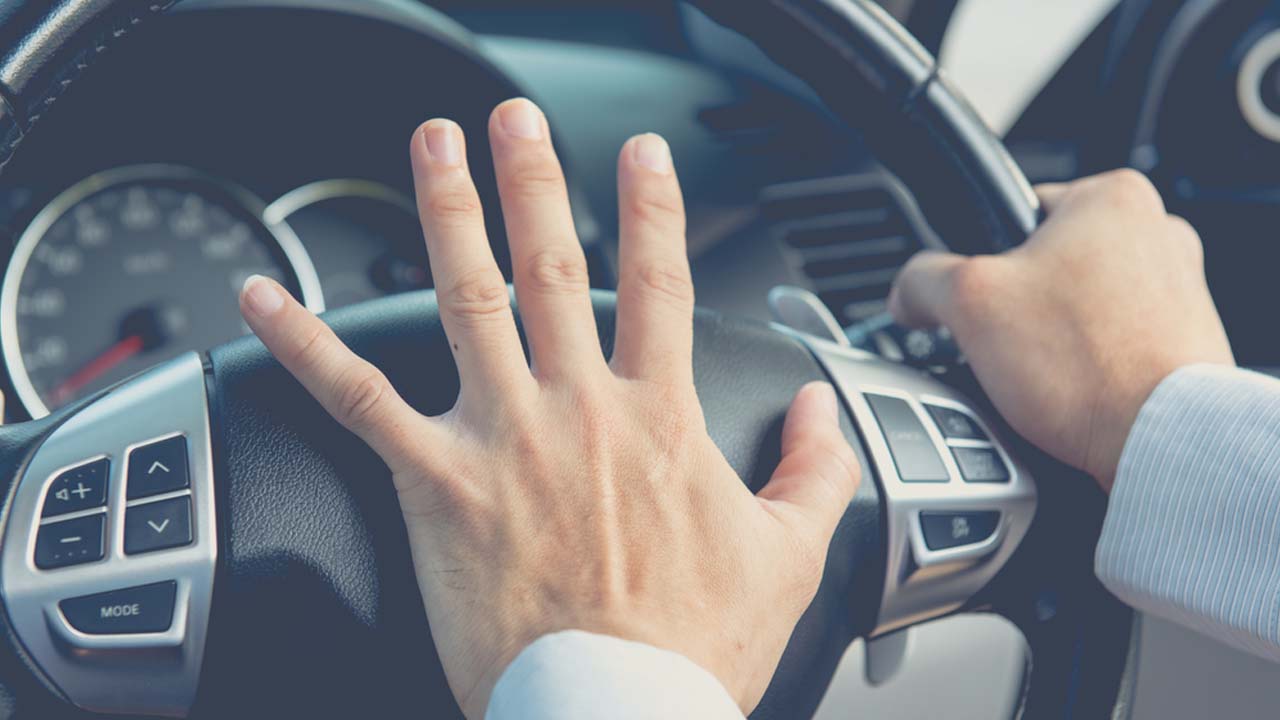We will show you the signs and symptoms to look out for when brake components reach the end their lifespan.
- Squealing Noise
- Metallic Grinding Sounds
- Indicator Light Comes On
- Clicking noise after releasing or depressing the brakes
- Shimmy is only a problem when driving slowly
- Braking causes the car to pull to one side
As brake pads are expensive, it is only natural to want to get as much out of them as possible. When brake pads are worn down to a level where the metal backing plate rubs against the rotor it is time to replace the rotor. This can also lead to damage to brake calipers when pistons are pushed out too far by the process of pressing brake pad material. The following are a few telltale symptoms that can help you to recognize the signs of brake component wear and needing attention.
1. Squealing Noise
It is actually a high frequency vibration of metal brake pads or drums that causes the squealing. Over time, excessive corrosion can form on non-contact outer perimeter areas of drums and rotors. Rust is less dense and more loose, so it's more likely that it will cause resonance.
It is also possible that a lip forms at the outer edge rotor surfaces, because brake pads never make contact in that area. The lip is more noticeable as the rotors become worn and start to resemble deep-dish fry pans. The lip may become so large that it makes contact with brakes with corners not chamfered. Squealing is the result. This can be made worse by cold weather that causes rotors contract. Also, brakes heated to high temperatures under heavy use will cause metal expansion.
2. Metallic Grinding Sounds
You can hear the sound of brake pads that have worn down to metal squeezing against the rotor. Some manufacturers place small metal ridges at the bottom of their pads. When brake pads begin to wear and thin out, these ridges make a metallic sound when they contact the rotor. This alerts the driver it's time to buy new pads. If you drive a lot, your brake pads may be worn down to around 25%.
Divide the distance you traveled up to this point by 3. This will give a rough estimate of how much longer it is until 'pad 0'. There's still a bit of time to go if there are 3 mm remaining. It's time to make an appointment at 1 or 2 mm thickness or to order the parts in advance for a specific date.
If you're looking at the thickness of your brakes pads, this is a good method. However, keep in mind that the outboard pad on the rotor can be easily seen, and the inboard pad on the other side cannot be seen unless the wheel is removed or if you climb underneath.
It is important to note that depending on your vehicle's application, the inboard pad may wear out faster. Therefore, the side visible through the spokes of the wheels cannot be relied upon as an accurate measure of the remaining lifetime. The edge of a new set of brake pads may rub on the lip of a deeply "dished-in" rotor, which will cause more squealing than previous sets.
3. Indicator Light Comes On
Most brake pads have sensors integrated into their material. The metal sensor becomes visible when the brake pad is worn down to 3mm. The metal-onmetal friction can cause squealing. On newer vehicles, an electronic sensor will display a warning.
4. Clicking noise after releasing or depressing the brakes
It is an indication that the brake pad is shifting. Because the brake pads are under pressure, they can't fall off. But, there's a built-in clip that locks them in position. Over time, the spring clips that hold the brake pads in place can break and become brittle. This causes the pad to slide around, causing clicking and vibrating noises. The brake pads will also be worn (often in an uneven manner) if this happens.
5. Shimmy is only a problem when driving slowly
In most cases the shimmy can be caused by warped rotors, much like an old vinyl. Each time the wheel is rotated, the warped section of the rotor pushes up against the pads in an alternating motion. This vibration is transmitted by brake calipers, directly to wheel hubs. axles, suspension frames, and vehicle frames.
You can tell if front rotors are causing the vibration by the steering wheel swaying in time with the brakes. The vibration felt in your seat usually indicates that only the rear rotors may be warped.
Rotor shudder can also be caused when corrosion is embedded into the surface of the rotors after a prolonged period in a humid environment.
A second cause of vibrations is heat spots and glazing on the rotor surfaces. This occurs when the iron compound in the rotor changes composition as a result of extreme and repeated heating.
Rotors can easily be removed from vehicles and ground flat by a special machine to remove warping or edge lips. The resurfacing method involves removing significant thickness from a rotor. Therefore, you should be aware of your vehicle manufacturer's specifications for rotor thickness. This is where there is still enough metal in the rotor to absorb and distribute heat without it becoming warped or glazed. It is important to replace rotors if the thickness of the resurfaced rotors falls below minimum. Rotors with less than this thickness are likely to warp and become glazed.
6. Car pulls to one Side when Braking
This can occur when the brakes on the vehicle grab more on the one side.
It is most likely caused by brake calipers (or wheel-cylinders for drum brakes) which have become corroded.
Brake fluid can leak onto a rotor's or drum's surface, causing pulling. As brake fluid isn't designed to be a liquid lubricant it creates an adhesive surface which creates more friction.
This is less likely. You can read more about brake fluid in our related post, which explains the contamination of brake fluid and explains DOT 3-4 and 5 fluids.
If you feel the brake pedal go to the ground, there's a leak in your system that is preventing fluid from being compressed properly. If no visible brake leak can be found at the wheels, or on the brake lines, then it's most likely the master-cylinder assembly.
The master-cylinder contains pistons, which push fluid through brake lines out to the wheel brakes. Internal seals can fail, resulting in reduced fluid movement within the master cylinder.
Brake boosters can be damaged if they become extremely difficult to depress. Both scenarios require immediate attention and the vehicle needs to be towed where it will undergo repairs.



